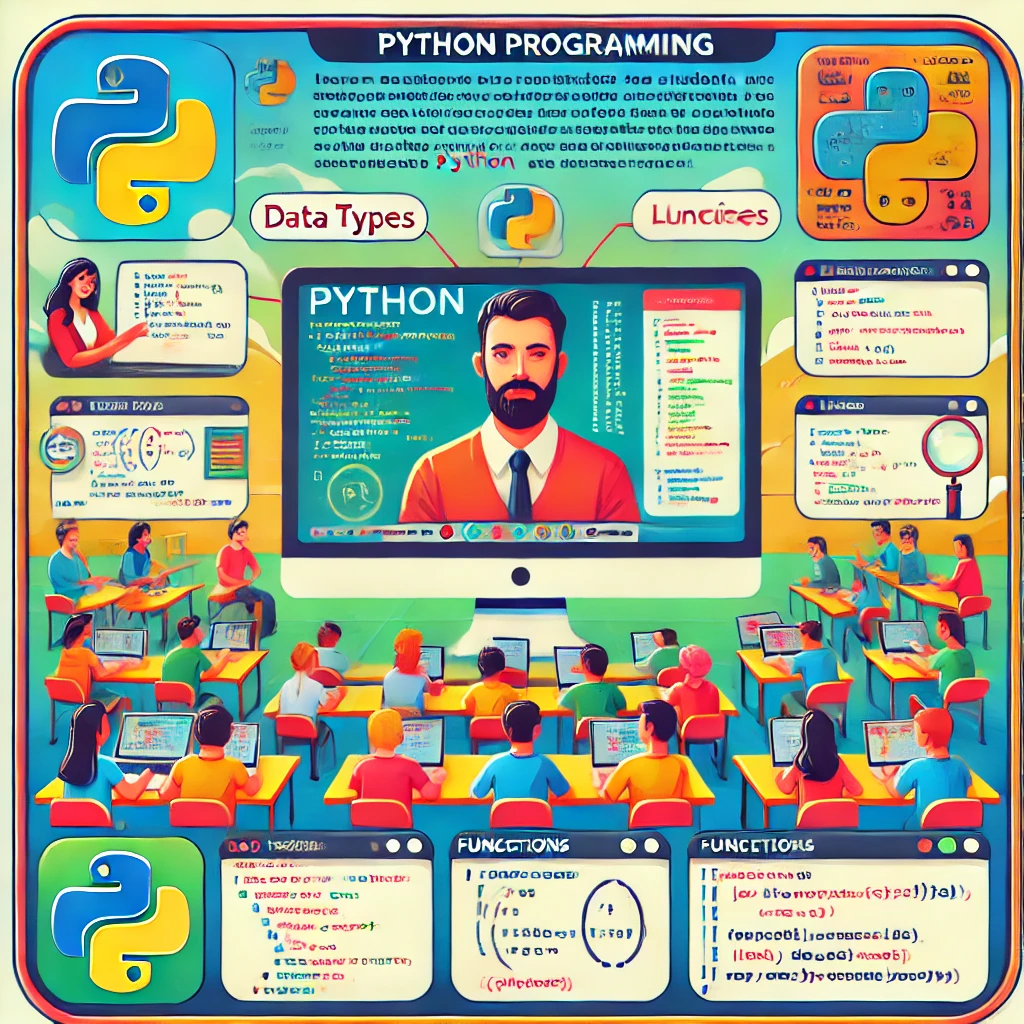Python Programming Course Overview for Secondary School Students
This Python programming course is designed for secondary school students to introduce them to the world of coding. Python is a beginner-friendly, high-level programming language known for its simplicity and versatility. By the end of this course, students will gain a solid foundation in programming and problem-solving.
Course Outline:
- Introduction to Python:
- Basics of programming
- Installing Python
- Writing and executing the first Python program
- Data Types and Variables:
- Understanding different data types (integers, strings, floats, booleans)
- Declaring and using variables
- Control Structures:
- Conditional statements (if, else, elif)
- Loops (for, while loops) and iteration
- Functions:
- Creating and using functions
- Parameters and return values
- The concept of code reusability
- Data Structures:
- Lists, tuples, dictionaries, and sets
- Accessing, modifying, and iterating through these structures
- Input/Output Operations:
- Taking input from users
- Writing and reading from files
- Basic Error Handling:
- Understanding errors and exceptions
- Using try, except blocks to handle errors
- Projects:
- Simple games like guessing numbers
- Text-based applications such as calculators
- Basic automation scripts
Learning Approach:
- Hands-on Coding: Each concept is paired with practice problems to help students write code from the start.
- Group Projects: Collaborative projects to develop problem-solving and teamwork skills.
- Final Project: A small Python project to apply everything learned, showcasing creativity and coding skills.
This course provides a stepping stone for students interested in technology, helping them build logical thinking and preparing them for more advanced programming in the future.

